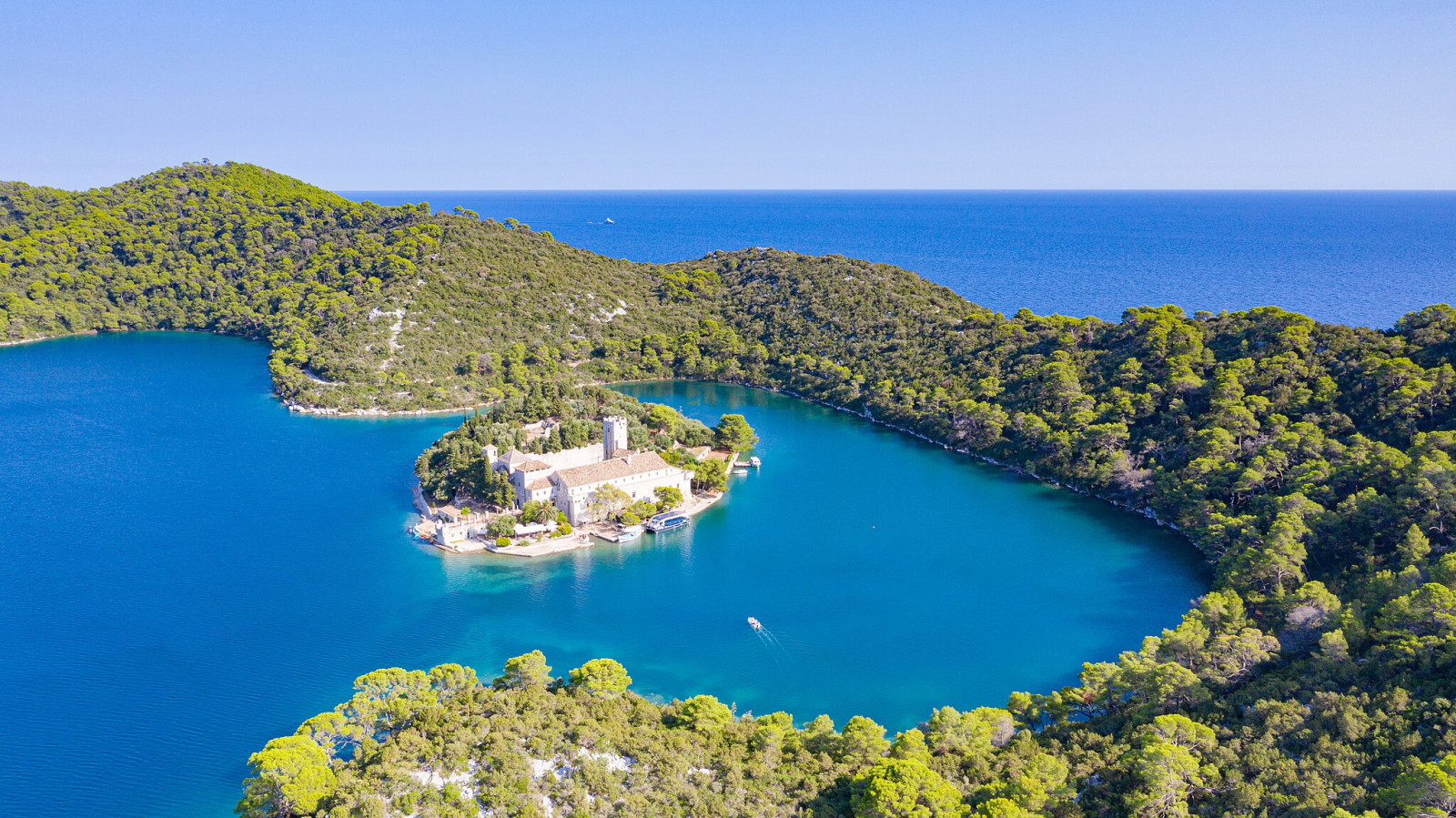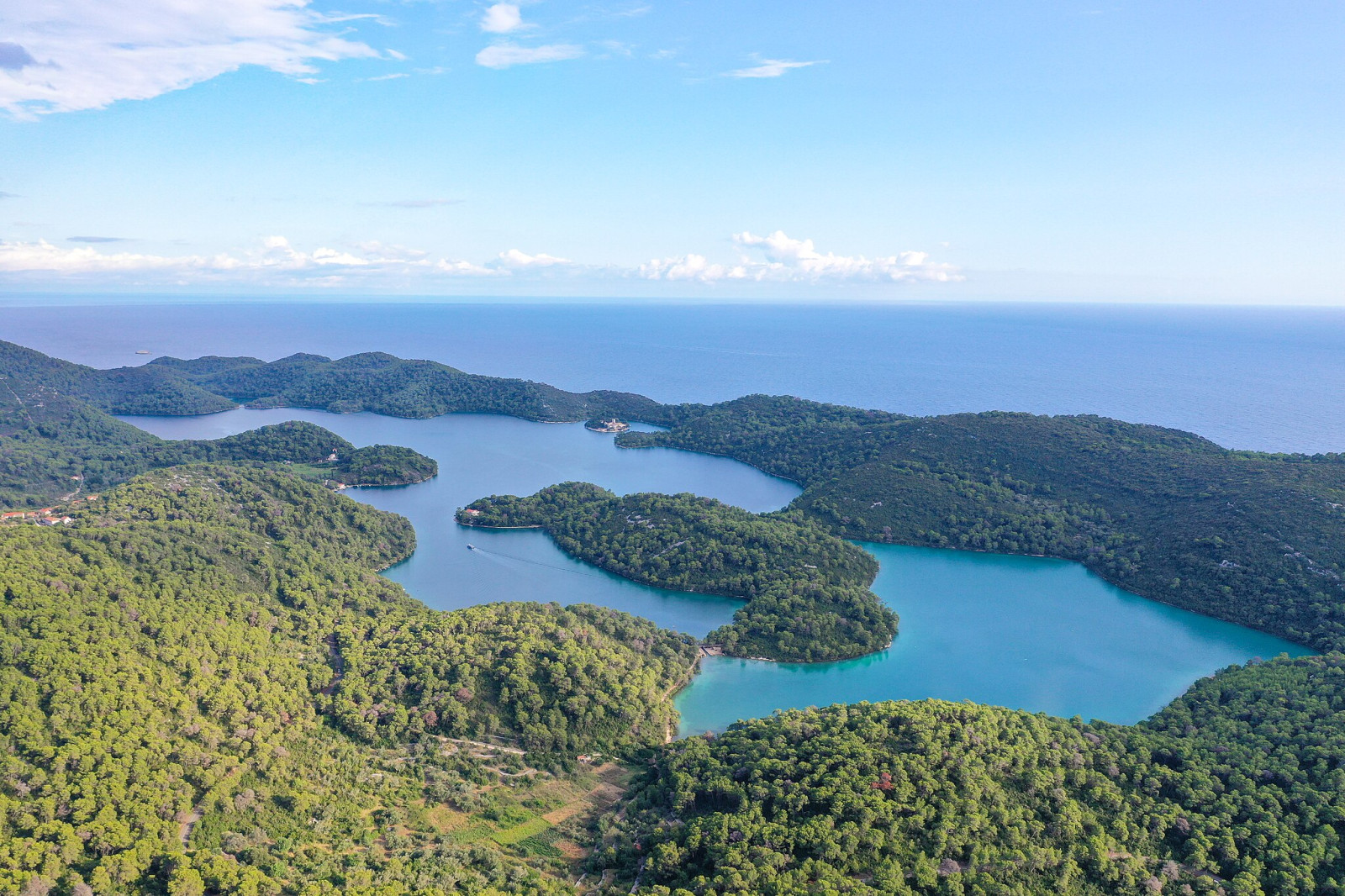Charger images
Les formats d'image autorisés sont de type jpeg, png ou gif
La taille maximale du fichier doit être de 20MB


The island of Mljet is called 'the green island', as more than half of the island consists of forest. The western point of the island is a National Park.
The Mljet National Park stretches over almost 5300 hectares, including a marine area of 500 meters from the coast, islands and cliffs, and therefore spans over almost a third of the island of Mljet. Mljet National Park borders two saltwater lakes – Veliko and Malo Jezero (Large and Small Lake). The Lakes stretch for about 4 kilometers. Right in the middle of the Large Lake, there is a small island (Sveta Marija) with a large building of the former Benedictine monastery, erected there in the 12th century. The monastery’s building is now a café/restaurant. Sveta Marija is connected by boats that sail there from both sides of the Lake. Both lakes are encircled by well-marked paths.
Note that the national park is truly beautiful, but that the amount of birds can be low. Although almost 120 bird species have been recorded in the wider area of the park (Mljet is located in the migration path of birds) and more than 50 bird species breed in the park, it can be hard to observe birds. But the National Park is lovely for walking, just don't expect tons of birds. Having said that, there are some interesting birds to be seen. The forests of Mljet are the only known nesting ground for Bondrée apivore in Dalmatia. Other birds that can be spotted are Cormoran huppé, Goéland d'Audouin, Faucon pèlerin, Grand-duc d'Europe, Petit-duc scops, Fauvette passerinette, Fauvette mélanocéphale, Fauvette à tête noire, Pie-grièche écorcheur, Rossignol philomèle and Pinson des arbres. And of course there is Goéland leucophée that are all over the place.
You have to take the ferry to reach the island of Mljet. If you travel by car you only have one option and that is the Jadrolinija ferry that sails from Prapratno on the Peljesac peninsula to Sobra on the island of Mljet. You can also visit Mljet National Park by boat from Dubrovnik, Split and Pelješa. There is almost no public transport on the island itself (just two buses a day running over the island). If you want to see the entire island, it is best to arrive by car or rent a car as it is about 40 km from one side of the island to the other side of the island. The roads are good and very quiet. You can also rent a bike.
Although there is no official entrance to the National Park as such, visitors are expected to pay (€ 25) for the entrance (buy your ticket at a kiosk in Polače or Pomena. Info brochures and leaflets, as well as maps of the Park, are available in both kiosks). From Polače it takes about 40 minutes to walk along the path through a wood and across the valley to Veliko and Malo Jezero. From Pomena it takes about 10 minutes to walk to Malo Jezero and another 10 minutes to Small Bridge (Mali Most) from where regularly scheduled boats are sailing to Sv. Marija (Melita) islet. Both paths are clearly signed and lead through nice pine and bay woods. In summer the National Park is open every day from 8 am to 8 pm, in low season: every day from 9 am to 5 pm. For more information you can send an email to the tourist office: turizam@np-mljet.hr
The circular walk indicated on the map is about 11 km. From Pomena the path leads to Malo (Small Lake) and further to Veliko (Big Lake) jezero. Along the way you have beautiful views of the island and the Benedictine monastery.
Votre feedback sera transmis à l’auteur.rice de cette zone et à l’équipe éditoriale de Birdingplaces, qui l’utiliseront pour améliorer la qualité des informations. (Vous souhaitez publier un commentaire visible en bas de page ? Fermez cette fenêtre et choisissez l’Option 1 : « Publier un commentaire, un conseil ou une observation ».)
Veuillez fournir des suggestions d'améliorations ou d'ajouts au texte de ce site ornithologique.
Veuillez fournir vos suggestions d'améliorations ou d'ajouts à la carte.
Veuillez fournir des suggestions d'améliorations ou d'ajouts à la liste des oiseaux.
Cliquez sur l'icône de l'oiseau () Insérez les noms d'oiseau dans votre langue. Ils seront automatiquement traduits pour les autres usagers !